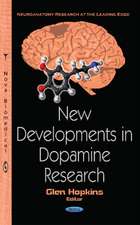Slow Synaptic Responses and Modulation
Editat de K. Kuba, H. Higashida, D. A. Brown, T. Yoshiokaen Limba Engleză Paperback – 19 apr 2014
| Toate formatele și edițiile | Preț | Express |
|---|---|---|
| Paperback (1) | 397.01 lei 6-8 săpt. | |
| Springer – 19 apr 2014 | 397.01 lei 6-8 săpt. | |
| Hardback (1) | 405.87 lei 6-8 săpt. | |
| Springer – 31 oct 1999 | 405.87 lei 6-8 săpt. |
Preț: 397.01 lei
Nou
Puncte Express: 596
Preț estimativ în valută:
75.97€ • 78.87$ • 63.35£
75.97€ • 78.87$ • 63.35£
Carte tipărită la comandă
Livrare economică 22 martie-05 aprilie
Preluare comenzi: 021 569.72.76
Specificații
ISBN-13: 9784431669753
ISBN-10: 4431669752
Pagini: 472
Ilustrații: XVI, 455 p.
Dimensiuni: 152 x 229 x 25 mm
Greutate: 0.63 kg
Ediția:2000
Editura: Springer
Colecția Springer
Locul publicării:Tokyo, Japan
ISBN-10: 4431669752
Pagini: 472
Ilustrații: XVI, 455 p.
Dimensiuni: 152 x 229 x 25 mm
Greutate: 0.63 kg
Ediția:2000
Editura: Springer
Colecția Springer
Locul publicării:Tokyo, Japan
Public țintă
ResearchDescriere
Information flow as nerve impulses in neuronal circuits is regulated at synapses. The synapse is therefore a key element for information processing in the brain. Much attention has been given to fast synaptic transmission, which predominantly regulates impulse-to-impulse transmission. Slow synaptic transmission and modu lation, however, sometimes have been neglected in considering and attempting to understand brain function. Slow synaptic potentials and modulation occur with a considerable delay in response to the accumulation of synaptic and modulatory inputs. In these contexts, they are plastic in nature and play important roles in information processing in the brain. A symposium titled "Slow Synaptic Responses and Modulation" was held as the satellite symposium to the 75th Annual Meeting of the Physiological Society of Japan on March 30-31, 1998, in Kanazawa. The theme was selected not only for the reason mentioned above, but also because of the considerable involvement of many Japanese scholars in establishing the basic issues. Following the dawn of synaptic physiological research, as Sir John Eccles, Sir Bernard Katz, and Professor Stephen Kuffler carried out pioneer work, Professor Kyozou Koketsu and Professor Benjamin Libet, the students of Sir John Eccles, and their colleagues established the concept of slow synaptic responses and modulation by studying vertebrate sympathetic ganglia. Since then, the concept has been ex panded with detailed investigations of both peripheral and central synapses at the levels of single ion channels, intracellular Ca"+ dynamics, intracellular transduc tion mechanisms, and genes.
Cuprins
The Dawn and Foundation of Slow Synaptic Potentials and Modulation.- M-Currents and Modulation.- M-Current: From Discovery to Single Channel Currents.- Properties of Muscarine-Sensitive Potassium Currents in Vertebrate Nerve Cells.- Slow Synaptic Responses in Neuronal Tumor Cells: Dual Regulation of ADP-Ribosyl Cyclase and Inhibition of M-Current by Muscarinic Receptor Stimulation.- Acetylcholine-Like Effect of Sulfhydryl-Modifying Reagents on M-Current in Rodent NG108-15 Cells.- Inhibition of M-Type K+ Currents by Cognition Enhancers in NG108-15 Cells and Rat Cerebral Neurons in Culture.- Muscarinic Inhibition of M-current in Bullfrog Sympathetic Neurones is Independent of Intracellular Ca2+ Release.- K+ Currents and Modulation.- Introductory Review: K Currents and Modulation.- The Role of Mg2+ in the Modulation of IRK3 by M1 Acetylcholine Receptor.- Temporal Profile of Muscarinic Modulation of the Slow Ca2+-Dependent K+ Current (ISAHP) in Rat Hippocampal Neurons.- Modulation of K+ Channels in Hippocampal Neurons: Transmitters Acting via Cyclic AMP Enhance the Excitability of Hippocampal Neurons Through Kinase-Dependent and -Independent Modulation of AHP- and h-Channels.- Three Types of Cerebellar Voltage-Gated K+ Currents Expressed in Xenopus Oocytes.- Facilitatory Effect of Calmodulin-Dependent Protein Kinase on the K+-Current Responses to Dopamine, Acetylcholine, and Phe-Met-Arg-Phe-NH2 in the Ganglion Cells of Aplysia.- Ca2+ Currents and Modulation.- Introductory Review: Calcium Channels and Modulation.- Neuronal T-Type Calcium Channels: Pharmacology and Investigation of Subunit Composition.- Exocytosis Calcium Channels: Autocrine/Paracrine Modulation.- Synaptic Modulation Mediated by G-Protein-Coupled Presynaptic Receptors.- Presynaptic Glutamate Receptors in the Hippocampus.- The ?1-Subunit of the L-Type Ca2+ Channel Is Converted to a Long Open and Noninactivating State by Large Depolarization.- Endomorphins Inhibit N-Type Ca2+ Channel Currents Through µ-Opioid Receptors in NG108-15 Cells Expressing Cloned µH-Receptors.- Ca2+ Dynamics and Modulation.- Introductory Review: Ca2+ Dynamics, and Modulation.- Ca2+-Induced Ca2+ Release in Presynaptic Terminals and Exocytosis.- Synaptic Modulation of Dendritic Ca2+ Influx and Gene Expression.- Receptor Activation Studies by Ca2+, Thermal, and PKC Imaging.- Dual Imaging of Ca2+ and Cl- in the Suprachiasmatic Nucleus.- Enhancement of Neurotransmitter Release by Activation of Ryanodine Receptors after Ca2+-Dependent Priming at Motor Nerve Terminals.- Upregulation of Cytosolic Ca2+ Increases by Cyclic ADP-ribose in NG108-15 Neuronal Cells: In Comparison with Inositol Tetrakisphosphate in Fibroblast Cells.- Plastic Nature of a Ca2+-Induced Ca2+ Release Mechanism in Hippocampal Synaptic Terminals.- Exocytosis and Modulation.- Introductory Review: Exocytosis and Modulation.- Studies of Neurotransmitter Release at Cholinergic Synapses Formed Between Sympathetic Neurons in Culture: Role of Ca2+ Channels in Neurotransmitter Release.- A Novel Adrenergic Receptor Potentiates Transmitter Release from the Chick Ciliary Giant Presynaptic Terminal by Activating the cGMP-Protein Kinase G Cascade.- Synaptic Transmission at the Drosophila Neuromuscular Junction: Effects of Metabotropic Glutamate Receptor Activation.- Suppressive Effects of Serotonin on Autaptic Transmission in Cultured Rat Hippocampal Neuron.- Paired-Pulse Depression and mGluR-Mediated Modulation of Cerebellar Climbing Fiber Synapses.- Adrenaline-Induced Long-Lasting Potentiation of Transmitter Release at Frog Motor Nerve Terminals.- Synaptic Plasticity and Modulation.- Introductory Review: Synaptic Plasticity and Modulation.- Modulatory Actions of Brain-Derived Neurotrophic Factor on Synaptic Transmission in Rat Visual Cortex.- Properties of AMPA Receptor Channel During Long-Term Depression in Rat Cerebellar Purkinje Cells.- Corticotropin-Releasing Factor (CRF) Induces Persistent Depression of Parallel Fiber to Purkinje Cell Synaptic Transmission.- Modulation of the Induction of LTP of Excitatory Hippocamposeptal Transmission by GABAB Receptor Activation in Rat Lateral Septal Nucleus (LSN) Neurons In Vitro.- Temporarily Distinct Induction of Two Phases of Long-Term Potentiation in Bullfrog Sympathetic Ganglia.- Use-Dependent Sensitization of Acetylcholine Channel Currents via Ca/Calmodulin-Dependent Kinase II in Cultured Rat Sympathetic Neurones.- Synaptic Development, Modulation and Gene Expression.- Introductory Review: Synaptic Development, Structural Modulation, and Gene Expression.- Signal Transduction Cascade from mGluR1 to PKC? Is Involved in Climbing Fiber Synapse Elimination During Postnatal Cerebellar Development.- Activity-Regulated Gene Expression in the Brain.- Development of a Phase-Locked High-Fidelity Transmission in the Auditory Synapse Is Accompanied by Increased Ca2+ Sensitivity of the Transmitter Release.- How Are Neuronal Genes Expressed in Neurons? Regulation of NMDA Receptor Subunit Type 1 Gene as a Model.- Glutamate-Induced Degeneration of CA1 Neurons in the Rat Hippocampus Studied by Video Microscopy and Laser Photolysis of a Caged Compound.- Role of Adhesion Molecule L1 in Neurite Outgrowth and Functional Synapse Formation.- B2 Bradykinin Receptors in Neuronal Cells: a Genetic Aspect.- Synaptic Transmission and Modulation.- Modulation of Synaptic Transmission in the Autonomic Nervous System.- Synaptic Transmission and Signal Transduction in the Suprachiasmatic Nucleus.- Fast and Slow Synaptic Responses to Dorsal Root Simulation in Dorsal Commissural Nucleus Neurons of Rat Sacral Spinal Cord In Vitro.- 5-Hydroxytryptamine Modulates Synaptic Transmission in the Hippocamposeptal Pathway.- Dopamine-Induced Presynaptic Modulation of Excitatory and Inhibitory Transmission in the Central Nervous System.- Muscarinic Modulation of Na+ Spike Propagation in the Apical Dendrites of Hippocampal CA1 Pyramidal Neurons.- The Third Line of Positive Allosteric Modulators for AMPA Receptors.- Modulation of Cholinergic Synaptic Transmission by Arachidonic Acid in Bullfrog sympathetic Neurons.- Slow Intrinsic Optical Signals in Rat Spinal Cord Slices and Their Modulation by Low-Frequency Stimulation.- Propagation of Depolarization-Induced Suppression of Inhibition in Cultured Rat Hippocampal Neurons.- Inward Current Induced by Achatin-I Attenuated by Some H1-Receptor Antagonists and Their Analogues.- GABAB Receptor Antagonists Shortened the Transcallosal Response Latency in the Cat Cortical Neurons but Dopamine Receptor Antagonists Did Not.- Optical Signals from a Rat Brain Slice Stained with Voltage-Sensitive Dyes Reflect Field Potentials of the Neural Activity: Differentiation of Optical Signals with Time and Field Potentials.
Caracteristici
To offer the basic concept and current understanding of slow synaptic responses, modulation and plasticity in nervous systems













